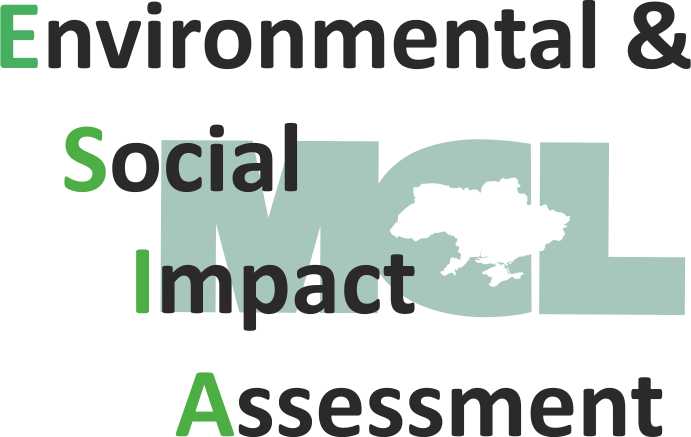
Environmental and Social Impact Assessment (ESIA)
Environmental and Social Impact Assessment (ESIA) is aimed for identifying, predicting and evaluating the types and scales of impacts on biodiversity and possible measures for natural resources conservation. Impact evaluation on biodiversity is real even project stage, therefore, environmental and social impact assessment process may take enough time, but current activity has already impact on environment. That`s why. Impact assessment of current activity considers more criteria and factors for evaluating than project activity.
Environmental and social impact assessment process includes the following stages.
Screening stage prescribes a quick analysis to determine the necessity of conducting impact assessment. For impact evaluation on biodiversity of an area under impact of activity it`s necessary to analyze such aspects as:
Screening allows not only to determine the necessity of environmental and social impact assessment, but also to establish on which stage or process of business activity biodiversity is on the highest impact. It required implementing preventive measures for reducing or mitigating the negative impact on social and nature environment or removing the types of flora and fauna on new suitable pristine location or natural habitat. Screening identifies the processes, activities or operations that can affect ecosystem and biodiversity.
Scoping of environmental and social impact assessment is carried out for identifying the negative level of impact, distance of extent and duration of impact on biodiversity. Scoping stage allows determining the necessity of surveys and researches. At this stage to environmental and social impact assessment can be involved the representatives of governmental authorities, public communities and environmental organizations for defying the key points of impact on biodiversity, including evaluation of social problems. For example, while environmental and social impact assessment of maintaining the Hydro facilities in Tajikistan on well-being of population can affect the changes in fish resources and reducing the sizes of grazing fields.
Baseline studies of biodiversity and natural habitat is aimed for studying the components of biodiversity on particular area, executing the maps of natural habitat, specifying the information on used resources by population and conducting of field researches and site studies.
Impact prediction and evaluation is the core stage of environmental and social impact assessment process. At this stage is required analysis of all information studied on previous stages. Involving to ESIA process the qualified ecologists, sociologists, biologists and economists to comprehensive analysis of environmental status, its biodiversity, scales and levels of environmental and social impact allows identifying an acceptance of insignificant impact of business activity, necessity for mitigating or fully unacceptance. The importance of comprehensive analysis of environmental and social impact assessment confirms a legal right in realization of planned or current activity.
Mitigation is required for preventing the occurrence of negative impact on biodiversity, eliminating the reasons of impact occurrence.
Consideration of alternatives prescribes the development of the alternatives (changes in technological and other processes, location or partner facilities) in case of defined significant impact on biodiversity.
Social and Environmental Management Plan/ Environmental Action Plan prescribes the developing and implementing of impact management system on biodiversity or environment, executing the plan of management of environmental and social impact and appointing the responsible persons for environmental action plan.
Environmental impact statement prescribes the development of conclusions on impact assessment based on the results of analysis and researches, and recommendations for alternative ways of activity realization, general appraisal of impact on biodiversity and social environment. Environmental impact statement is required while crediting by International Financial Corporation and European bank for Reconstruction and Development.
MCL, LLC offers the development a project ESIA and conducting of environmental and social impact assessment (ESIA) due to the European and international standards while crediting. The sophisticated specialists of MCL, LLC guarantee the comprehensive study, analysis of your activity and development of Environmental Action Plan for mitigating a possibility of negative impacts occurrence and contributing positive impact of project or activity in teh field of ecology and environmental protection.